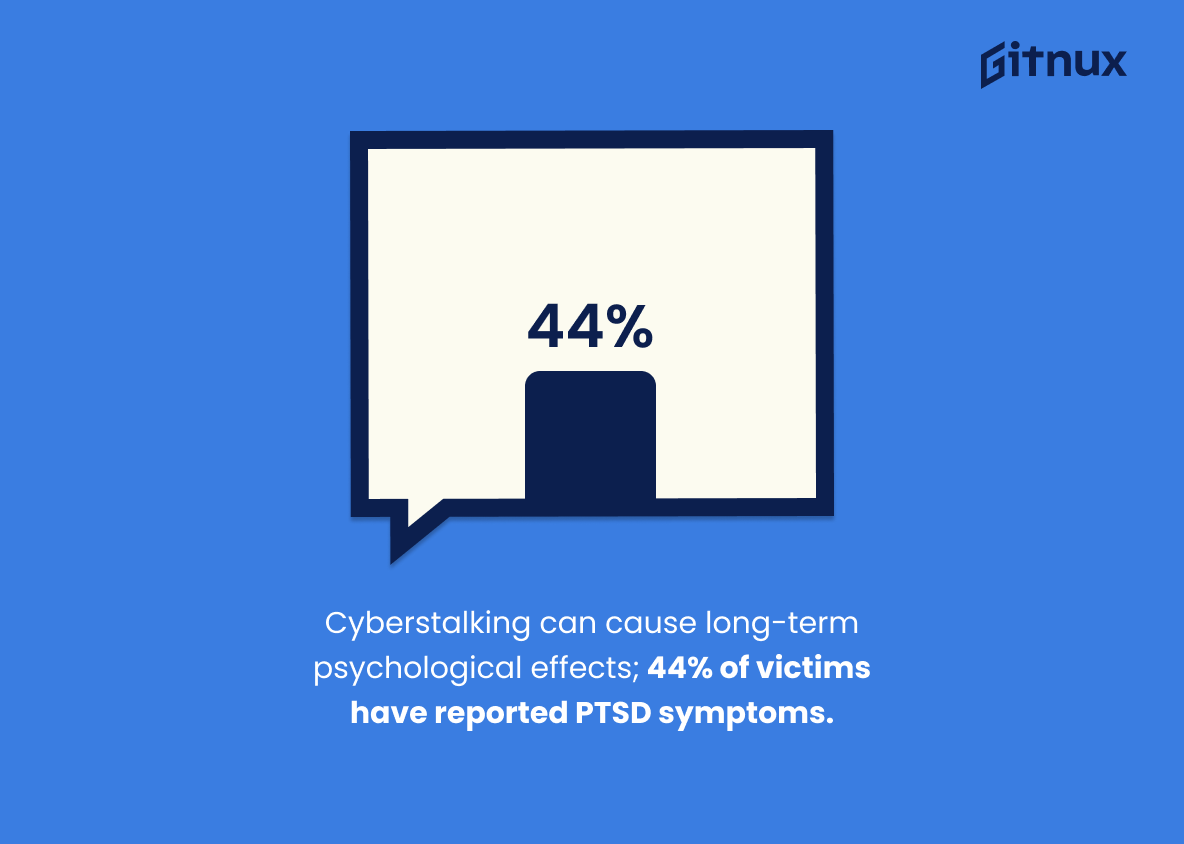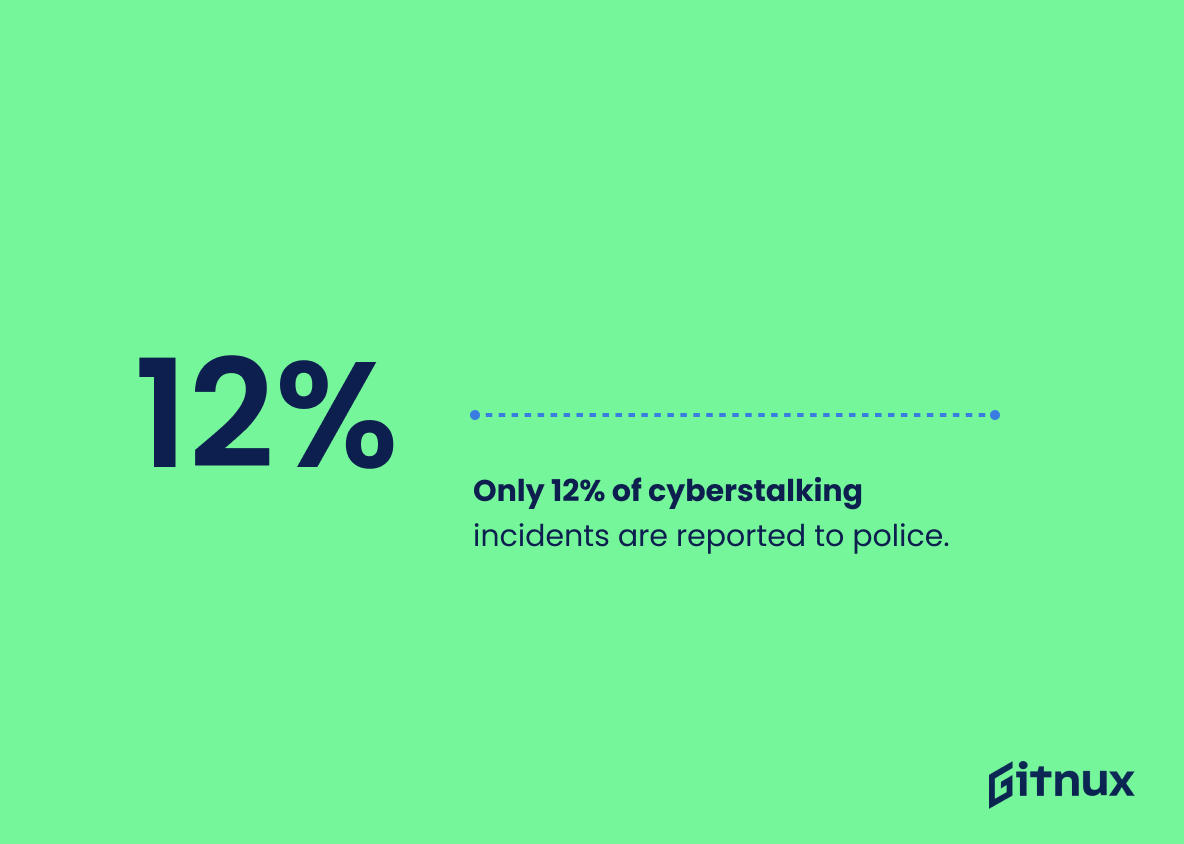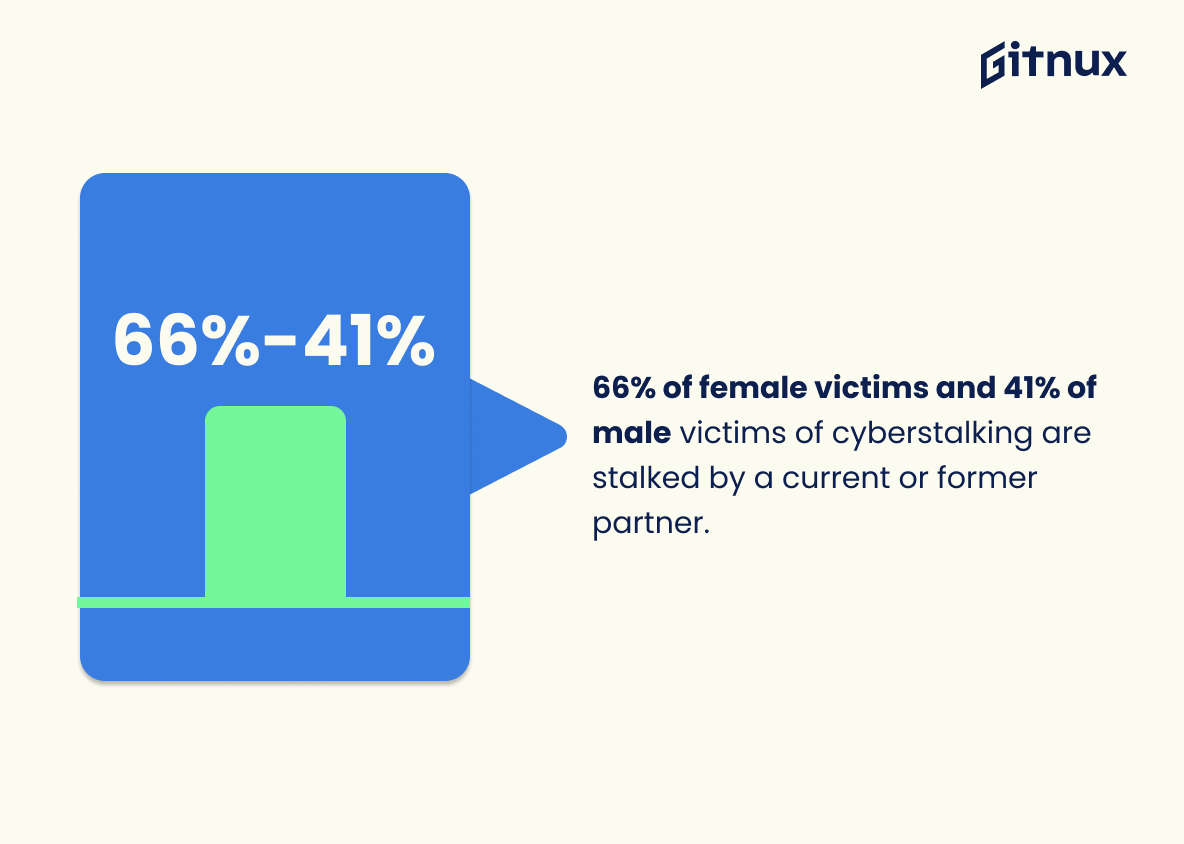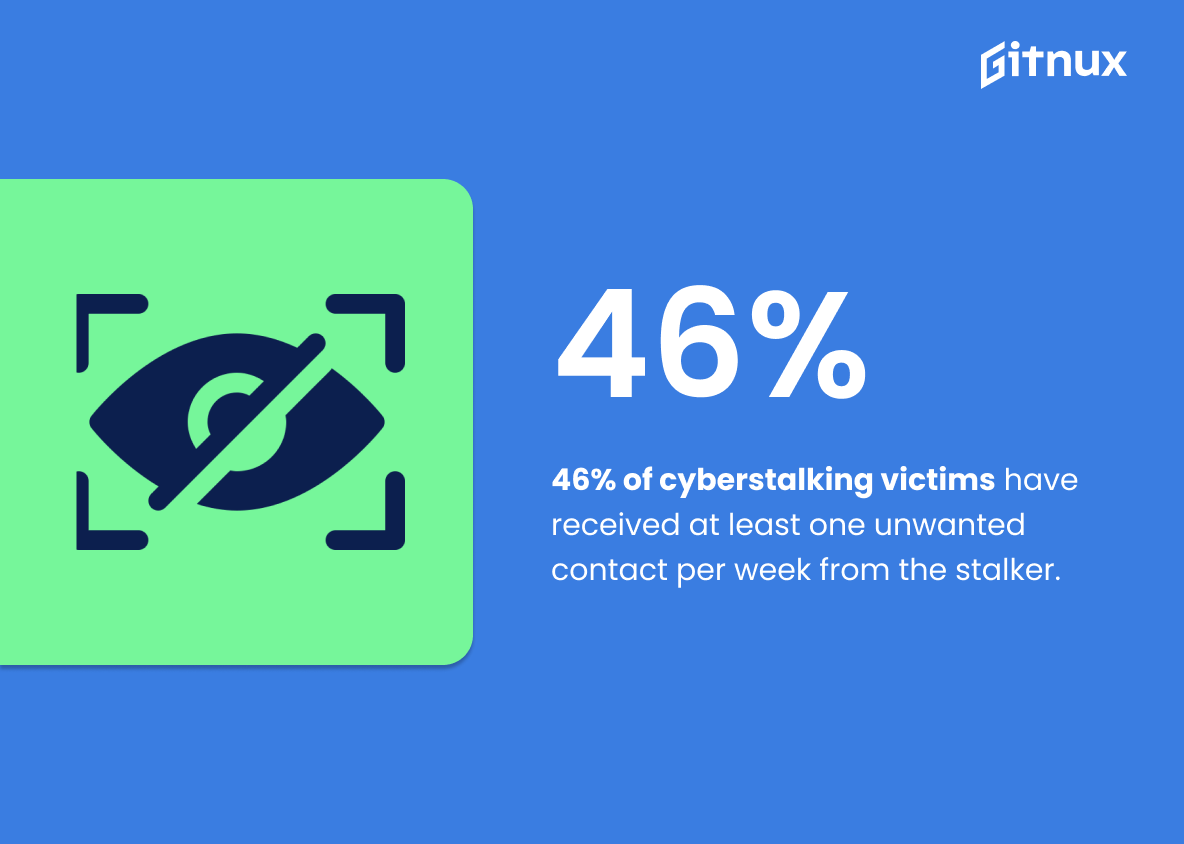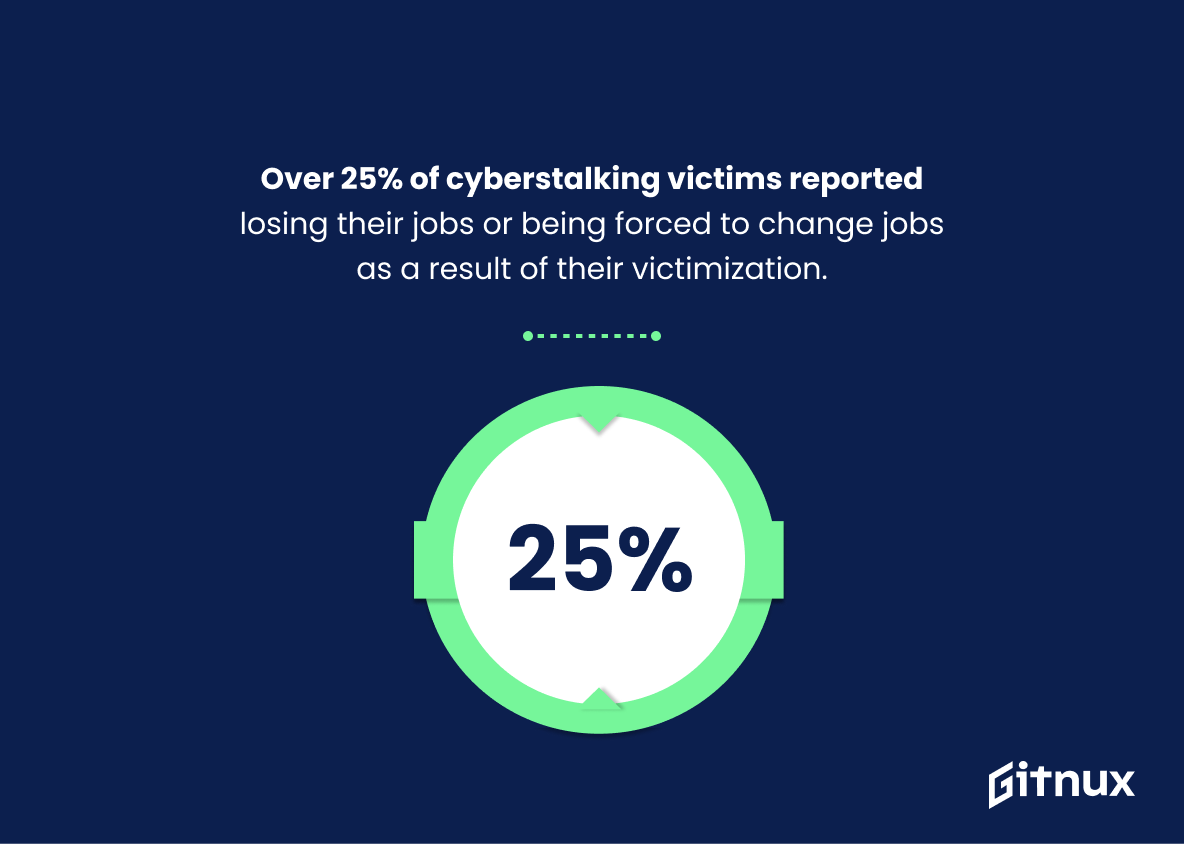In the digital age, technology has made it easier to connect with others worldwide. However, it has also brought new challenges, such as the rise of cyberstalking. We refer to a form of harassment in which the perpetrator uses electronic communication to harass or intimidate their victim. This issue has become increasingly prevalent in recent years, with a growing number of reported cases.
This article will examine the most important cyberstalking statistics, including the prevalence, the demographics of victims, the consequences, reporting and persecution, and prevention and education.
Cyberstalking: The Most Important Statistics
47% of cyberstalking victims report experiencing emotional distress, 38% report experiencing anxiety, and 19% report experiencing depression.
78% of cyberstalking victims know their stalkers somehow.
Prevalence of Cyberstalking
Quantifying the prevalence of cyberstalking can be difficult, as many incidents go unreported.
However, based on a report by the UK’s Office for National Statistics, there were 10,356 reported cases in England and Wales in 2020, a 24% increase from the prior year.
According to a Statista survey conducted in 2021, approximately 11% of US adults have experienced cyberstalking at some point.
The survey indicates that women were more likely to be cyberstalking victims than men. Of those surveyed, 15% of women reported being cyberstalked, compared to 6% of men.
There appears to be an upward trend in cyberstalking over time.
A report from the Cyberbullying Research Center has shown that the percentage of students who reported being cyberstalked rose from 6% in 2007 to 34% in 2019. This trend has also been evident in the UK, where the number of reported cases has been steadily increasing over the past few years.
Cyberstalking can take various forms, such as sending threatening or harassing messages, spreading rumors or false information, impersonating the victim online, and sharing private or intimate photos or videos without the victim’s consent.
Garbo, a non-profit organization that provides information on individuals who may pose a threat, reported that approximately 61% of cases involve a current or former intimate partner.
Demographic Characteristics of Cyberstalking Victims
Women are more likely to be victims than men; according to a survey conducted by Statista, 64% of victims are female, while 36% are male.
Sexual minorities face a higher risk; the Cyberbullying Research Center reported that 52% of LGBT youth experienced cyberstalking, compared to 25% of non-LGBT youth.
Young adults are more susceptible; The Cyberbullying Research Center study revealed that 37% of 18-24 years-olds experience cyberstalking, compared to 17% of those above 25.
Additionally, the Cyber Civil Rights Initiative found that 54% of victims were under 30.
Consequences of Cyberstalking
According to a study by the National Center for Victims of Crime, over 70% of victims reported experiencing significant emotional distress due to the result of the harassment.
Additionally, 30% of these victims reported experiencing symptoms of Post-Traumatic Stress Disorder (PTSD) due to cyberstalking.
Cyberstalking significantly impacts victim’s personal and professional life.
A study by the Pew Research Center found that 26% of women who had experienced online harassment reported a “significant impact” on their overall reputation; 22% said that it negatively impacted their self-esteem.
Cyberstalking can also have physical consequences for victims; a National Network to End Domestic Violence survey found that 23% of victims reported experiencing physical harm.
Its impact is often long-lasting; in a study by the University of Bedfordshire, 75% of victims reported that the harassment had a lasting impact on their mental health.
Additionally, 41% reported that cyberstalking hurt their social life.
Victims often feel helpless and powerless; according to a study by the University of Bedfordshire, 64% reported feeling “powerless to stop” the harassment. This feeling can lead to anxiety and stress.
Reporting and Prosecution
Despite the prevalence, many victims do not report the harassment to the authorities.
A survey conducted by the Pew Research Center found that only 38% of women who had experienced online harassment reported it to law enforcement.
There are several reasons why victims may hesitate to report cyberstalking. According to a study by the National Center of Victims of Crime, the most common reason victims did not report was because they did not believe law enforcement could or would help them.
The anonymous and geographically dispersed nature of online harassment makes it difficult for law enforcement to identify and apprehend perpetrators.
Despite these challenges, some cyberstalkers have been prosecuted; 27% of victims reported that their cyberstalker had been arrested or prosecuted.
Prevention and Education
As digital natives, young people are particularly vulnerable. Many young people use social media and other online platforms regularly, making them potential targets for cyberstalking.
57% of young people believe that online safety should be taught in schools; this statistic highlights the need for education and awareness campaigns that teach young people about the risks of cyberstalking and how to stay safe online.
Only 14% of victims report their experiences to the police.
Many victims of cyberstalking are hesitant to report their experiences to the authorities; education and awareness campaigns that inform the public about the importance of reporting may help increase the number of victims who come forward.
73% of victims experience at least one persistent online risk, such as unsolicited contact, threats, or cyberbullying.
To reduce the risk, it’s important to educate people about online safety tools and privacy settings. Many social platforms, for example, offer features that allow users to block and report abusive accounts.
91% of Americans believe that the government should be doing more to protect people from online harassment and abuse.
To prevent cyberstalking, educating people about healthy relationships and appropriate online behavior is important.
54% of incidents involve an ex-partner or current partner.
While cyberstalking is a complex and difficult issue, several initiatives and technologies are in place to prevent it.
Supplementary Statistics
40% of cyberstalking victims are men, while 60% are women.
Cyberstalking is a serious issue that affects both men and women. It highlights the need for greater awareness and education about the dangers of cyberstalking, as well as the need for more effective measures to protect both genders from this form of harassment.
In 77% of cyberstalking cases, the perpetrator and victim are already known to each other.
Thus, it is not just a problem of strangers lurking in the shadows, but of people who are already known to the victim. This statistic serves as a warning that even those we know and trust can be capable of cyberstalking.
1 in 7 Australian adults have experienced some form of cyberstalking.
This highlights the need for greater awareness and education around the issue, as well as the need for more effective measures to protect individuals from this form of harassment. It is a call to action for all Australians to take steps to protect themselves and their loved ones from cyberstalking.
45% of cyberstalking victims experience significant emotional distress and fear.
Cyberstalking is not just a nuisance, but a serious issue that can have a devastating impact on the mental health of those affected. It is a call to action to take cyberstalking seriously and to do what we can to protect those who are vulnerable to it.
43% of cyberstalkers use some form of social media to contact, harass, or track their victims.
Thus, there is a need for increased awareness and education about the dangers of social media, as well as the importance of taking proactive steps to protect oneself from cyberstalkers.
In the UK, 18.8% of police recorded stalking and harassment cases involved digital communication.
Digital communication can be used as a tool for perpetrators to perpetrate their crimes, and it is essential to be aware of the risks associated with it.
Half of cyberstalking victims are harassed through texting, and 14% through instant messaging.
This serves as a warning to those who may be engaging in cyberstalking, as it shows that victims are increasingly using technology to report and document their experiences.
Approximately 5% of Canadian women report experiencing cyberstalking since the age of 15.
It highlights the need for greater awareness and education about the issue, as well as the need for more effective measures to protect victims and prevent cyberstalking from occurring in the first place.
In 2015, 1 in 5 internet users in the European Union experienced stalking.
College students are a particularly vulnerable group, with 17% of female students experiencing cyberstalking.
In a 2018 survey, 30% of respondents experienced some form of cyberstalking while using a dating app or website.
Thus, there is the need for increased awareness and education about the dangers of online dating, as well as the importance of taking steps to protect oneself from cyberstalking.
Roughly 37% of cyberstalking victims reported losing friends or loved ones as a result of their stalker’s actions.
The effects of cyberstalking can be far-reaching and can have a profound impact on the lives of victims, not only emotionally but also socially.
Conclusion
Cyberstalking is a serious issue that affects many people, and it is essential to be aware of the risks and take steps to protect yourself. The statistics show that cyberstalking is on the rise and can have devastating effects on victims.
We all must work together to raise awareness of cyberstalking and to support victims of this crime. We must also continue to work to strengthen laws and regulations to protect people from cyberstalking and other online harassment.
References
Garbo: “The Alarming Truth About Cyberstalking” cited in February 2023 (Source)
Office for National Statistics: “Cyber-stalking” cited in February 2023 (Source)
Cyberbullying Research Center: “Cyberbullying Statistics 2021 | Age, Gender, Sexual Orientation, and Race” cited in February 2023 (Source)
Cyberbullying Research Center: “Cyberstalking” cited in February 2023 (Source)
Statista: “Distribution of cyber stalking victims in 2013, by gender” cited in February 2023 (Source)
Statista: “Cyber stalking an ex or current partner online according to adults in the United States as of December 2019, by age group” cited in February 2023 (Source)
Dataprot: “Heart-Breaking Cyberbullying Statistics for 2022” cited in February 2023 (Source)
Broadband Search: “All the Latest Cyberbullying Statistics in 2023” cited in February 2023 (Source)
Statista: “Most common forms of cyber stalking an ex or current partner worldwide from November 15 to December 7 2021” cited in February 2023 (Source)
Brandon Gaille: “21 Provocative Cyberstalking Statistics” cited in February 2023 (Source)
Research Gate: “The Impact of Cyberstalking” cited in February 2023 (Source)

